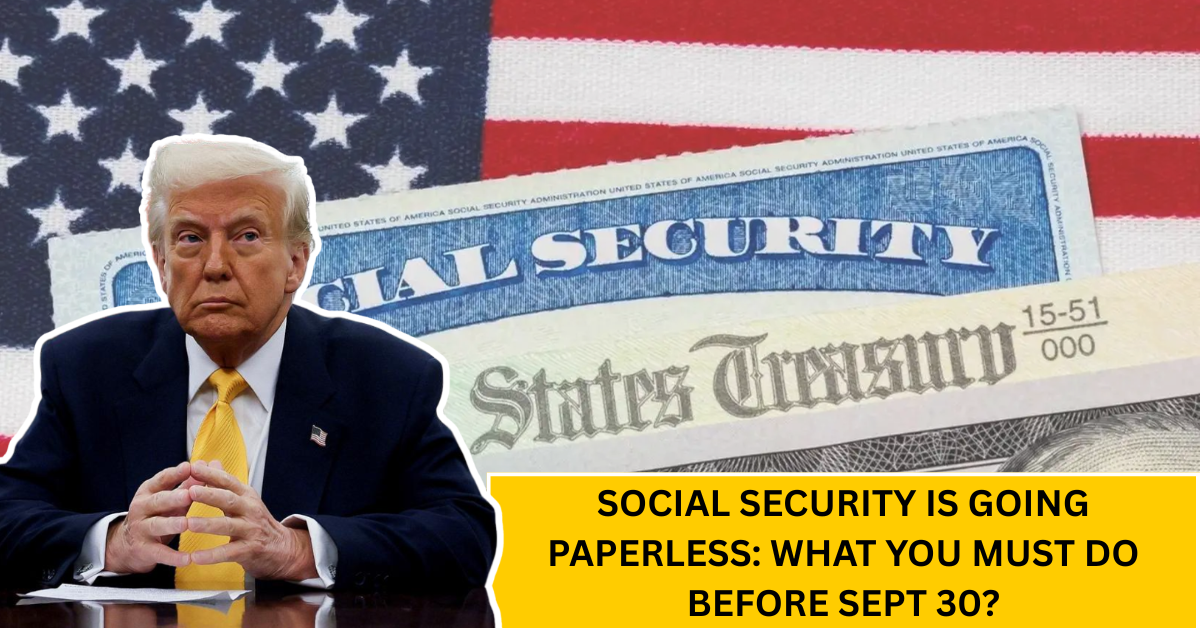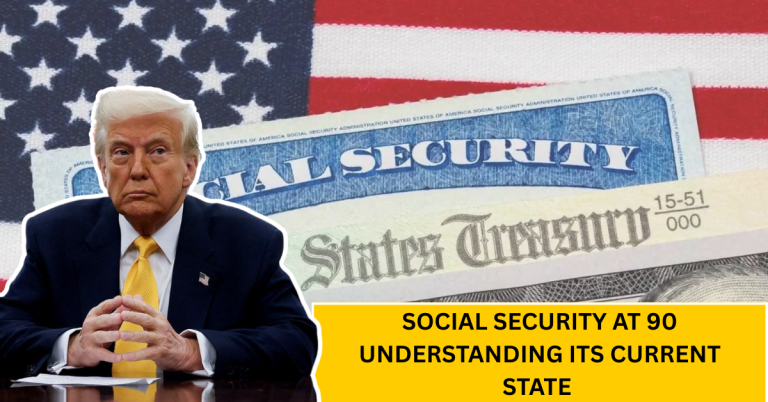
Social Security is undergoing a major transformation as it moves completely to electronic payment methods by September 30. This significant change means paper checks will no longer be an option for receiving benefits, impacting millions of Americans who currently rely on traditional payment methods. The transition aims to modernize the system and improve efficiency for both the agency and beneficiaries.
If you’re among those still receiving paper Social Security payments, now is the time to make alternative arrangements. The deadline is quickly approaching, and failing to select an electronic payment option could result in significant delays or disruptions to your benefits. This article will guide you through everything you need to know about the transition timeline, available options, and steps to ensure you continue receiving your benefits without interruption.
The Evolution of Social Security Payments
Social Security has come a long way since its inception in 1935. When the program first began, payments were made primarily in cash or by physical checks. Over the decades, technology has transformed how benefits are delivered to recipients. The shift toward electronic payment methods began gaining traction in the 1990s, with direct deposit options becoming more widely available. This evolution reflects broader societal trends toward digital financial transactions while aiming to reduce costs and improve security for beneficiaries.
Why the Complete Shift to Electronic Payments?
The Social Security Administration’s decision to eliminate paper checks by September 30 is driven by several key factors. Firstly, electronic payments are significantly more cost-effective than processing and mailing millions of paper checks annually.
The SSA reports that electronic payments save approximately $1 per payment compared to paper checks, amounting to substantial savings for taxpayers. Additionally, electronic payments offer enhanced security, reducing the risk of checks being lost, stolen, or intercepted. For beneficiaries, electronic deposit means faster access to funds and greater flexibility in managing their finances.
Available Electronic Payment Options
Beneficiaries have multiple electronic payment options to choose from. The most common is direct deposit, where payments are automatically transferred to a personal checking or savings account. Another popular option is the Direct Express® prepaid debit card, which provides secure access to funds without requiring a traditional bank account.
According to the U.S. Treasury’s Financial Management Service, “Direct Express® cards offer the same protection and security as a bank account, without the monthly fees often associated with traditional banking services.”1 This makes it an accessible option for those who may be unbanked or prefer not to maintain a traditional bank account.
Steps to Update Your Payment Method
Transitioning to electronic payments is straightforward and can be completed through several convenient methods. The simplest approach is to visit the official Social Security website at www.ssa.gov/myaccount and create an account to manage your payment preferences. Alternatively, you can call the Social Security Administration’s toll-free number at 1-800-772-1213 (TTY 1-800-325-0778) between 8:00 a.m. and 7:00 p.m., Monday through Friday. For those preferring in-person assistance, your local Social Security office can help you complete the necessary paperwork. Remember to have your personal information and bank details ready when making these changes.
Direct Deposit: The Most Popular Choice
Direct deposit remains the preferred method for the majority of Social Security beneficiaries. This option allows your benefits to be deposited directly into your checking or savings account on payment dates, eliminating the need to physically deposit or cash a check.
The process involves providing your bank’s routing number and account number to the Social Security Administration. According to a 2022 report by the Federal Reserve, “Direct deposit has become the standard payment method for government benefits, with over 90% of recipients choosing this convenient and secure option.”2 The benefits of direct deposit include faster access to funds, no risk of lost or stolen checks, and reduced waiting time for payment to clear.
The Direct Express® Prepaid Debit Card Option
For those who don’t have traditional banking relationships, the Direct Express® prepaid debit card offers an excellent alternative. This card is specifically designed for receiving federal benefit payments and provides many of the same advantages as a bank account. Cardholders can make purchases, withdraw cash from ATMs, and receive their payments without delay each month.
The U.S. Treasury emphasizes that “Direct Express® cards come with fraud protection and customer service, ensuring your money is safe and accessible.” There are no monthly fees for card activation or when checking your balance by phone, though standard cash withdrawal and transfer fees may apply.
Deadline Considerations and What Happens After
September 30 marks the final deadline for selecting an electronic payment option, but beneficiaries are strongly encouraged to make the transition well in advance to avoid any disruptions. According to the Social Security Administration, “If you don’t choose an electronic payment method by the deadline, your benefit payments may be suspended or significantly delayed.
” After the September 30 cutoff, the SSA will continue to contact those who haven’t made the transition to ensure they can continue receiving benefits without interruption. However, proactive beneficiaries can avoid potential complications by updating their payment preferences well before the deadline.
Special Considerations for Vulnerable Populations
The transition to electronic payments raises particular concerns for certain vulnerable populations, including elderly individuals, those with disabilities, or those with limited access to technology or banking services. Recognizing these challenges, the Social Security Administration has implemented accommodations such as home visits for those unable to visit local offices and expanded telephone assistance hours.
Additionally, many community organizations and Area Agencies on Aging offer free assistance to help vulnerable populations navigate the electronic payment transition. These resources ensure that no beneficiary is left behind in the shift toward digital payment methods.
International Recipients: Unique Challenges
Social Security recipients living outside the United States face additional considerations when transitioning to electronic payments. International direct deposit may have different processing times and fees, and banking regulations vary by country. For expatriates, the Direct Express® card may offer more consistent access to funds.
The Social Security Administration provides special resources for international beneficiaries, including multilingual assistance and country-specific payment information. According to the SSA’s website, “We’re committed to ensuring that our international beneficiaries receive the same level of service as those within the United States during this transition.” Beneficiaries living abroad are encouraged to contact the Social Security Administration directly with any country-specific questions.
Frequently Asked Questions About Electronic Payments
Many beneficiaries have questions about the electronic payment transition. Common concerns include whether electronic payments are secure, if there are any fees associated with the new methods, and how to manage funds received electronically.
The Social Security Administration addresses these concerns by emphasizing that electronic payments are actually more secure than paper checks, as they eliminate the risk of mail theft. Most electronic payment methods, including direct deposit and Direct Express® cards, do not incur any fees for basic services. Additionally, beneficiaries can easily track their payments through online banking portals or the Direct Express® mobile app, providing greater transparency and control over their funds.
Benefits Beyond Convenience
The shift to electronic payments offers numerous advantages beyond mere convenience. Environmental benefits are significant, as millions fewer paper checks and associated mailers will be produced each year.
Electronic payments also reduce administrative burdens for the Social Security Administration, allowing staff to focus more on direct service to beneficiaries rather than processing physical payments. For recipients, electronic deposit eliminates the uncertainty of mail delays and provides immediate access to funds on payment dates. Additionally, electronic payment methods support budgeting and financial planning by creating clear digital records of benefit receipts, which can be particularly valuable for those managing tight household finances.
Preparing for Future Payment Evolution
The transition to electronic payments by September 30 represents just one step in the ongoing modernization of Social Security benefits delivery. As technology continues to evolve, the Social Security Administration is exploring additional ways to enhance service delivery, such as mobile payment options and improved online account management.
Beneficiaries should view this transition as an opportunity to become more comfortable with digital financial tools, skills that will increasingly become essential in our increasingly cashless society. By embracing electronic payment options now, beneficiaries can position themselves to adapt more easily to future changes in benefits delivery and financial technology.
Resources and Support for Beneficiaries
The Social Security Administration provides extensive resources to assist beneficiaries during the transition to electronic payments. The official SSA website offers comprehensive guides, video tutorials, and frequently asked sections related to electronic payments. Additionally, the agency operates a toll-free helpline with representatives trained to help with payment method changes.
Community organizations, senior centers, and libraries often host assistance sessions where beneficiaries can receive hands-on help setting up electronic payment options. For those with limited internet access or computer skills, telephonic guidance is available by calling 1-800-772-1213. These resources ensure that help is available to beneficiaries regardless of their technological proficiency or geographic location.




